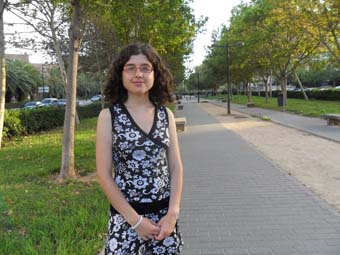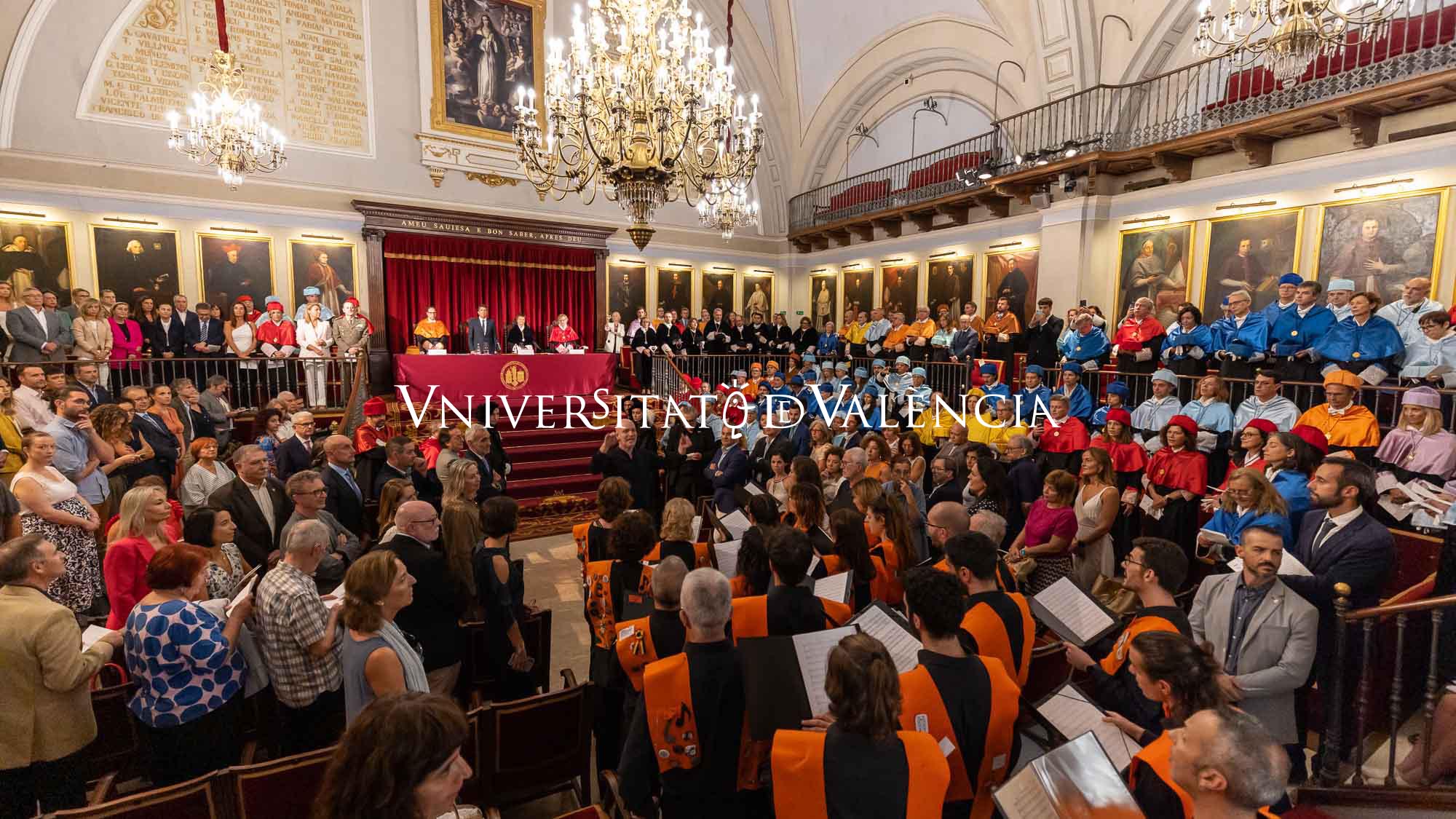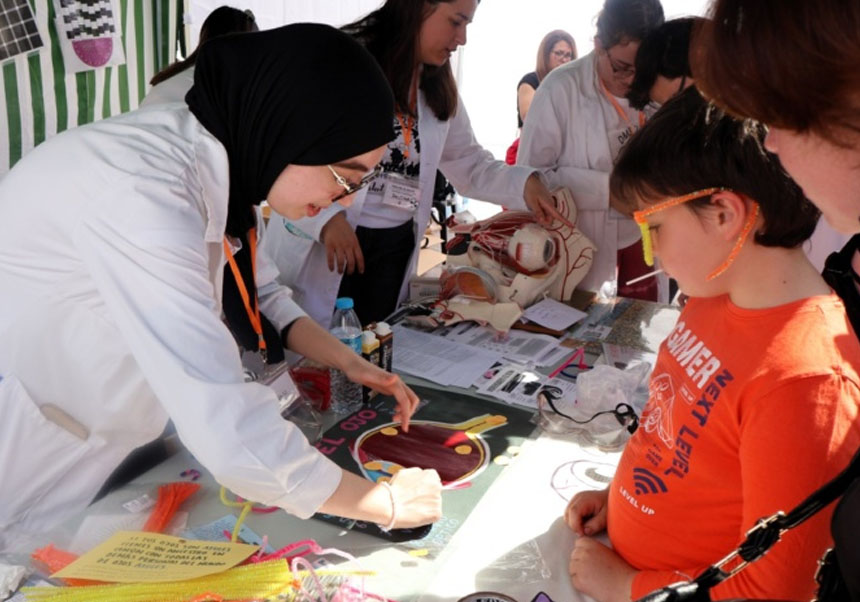
“The users only use a small number of emojis, and mostly it is the faces. The emoticon most frequently used is the kissing one and, on the whole, its use stimulates creativity”. These are some of the conclusions of the doctoral thesis read by Agnese Sampietro at Universitat de València about the use, dissemination and history of emoticons and emojis, the first systematic study about the phenomenon.
The work shows that emojis, a graphic variant of emoticons are used, more often than not, in informal situations and positive contexts. What´s more, these popular pictures have surpassed the limits of the screen, as they have an important economic aspect and form a part of the world´s iconographic landscape, not only in social networks but also in advertising.
The thesis read at UV fits within the framework of computer-mediated communication (CMC), an academic discipline that studies digital communication from a linguistic perspective. It also analyses the phenomenon of emojis and emoticons from a pragmatic angle (pragmatics is a subfield of linguistics which is interested in how the context influences the interpretation of meaning.
“The study confirms the perception of the enormous popularity of emoticons. However, they are not used in an identical way. Instead, they are used in a creative and uneven way”, Sampietro affirms. “One can glimpse the beginning of the fossilization of their use, even though standard norms do not exist. Moreover, the users are very conservative in the use of these pictures”, the researcher highlights.
Agnese Sampietro´s thesis, “Emoticonos y emojis. Análisis de su historia, difusión y uso en la comunicación digital actual. (“Emoticons and emojis. Analysis of their history dissemination and use in the current digital communication”) was read at the end of May, and the reading was directed by Ricardo Morant Marco, a full university professor of Linguistics at the Department of Language Theory and Communication Sciences at UV. The thesis obtained the “cum laude” distinction.
One of the most novel aspects of the research is that emoticons and emojis confirm some social and cultural tendencies related with digital communication and contemporary culture, like new ways of understanding creativity, the notion of realism as perceived by the users, as well as the values that can be transmitted through new technologies.
In her review of the bibliography, Agnese Sampietro has also identified possible “analogical” precedents of the popular faces which today are found in digital communication. They are cultural manifestations, mostly Japanese ones, like manga, anime and poetry; or little known typographic games of editors from the XVIII and XIX century.
In Whatsapp
The work also identifies the functions of emoticons in the popular application, Whatsapp. “They are used to make the conversation run smoothly (for example, when giving the other person a turn to speak), or to increase the verbally expressed politeness (emphasizing thanks or ending the conversation)”. Nevertheless, they rarely are a vehicle for emotional content and they are not normally used to substitute words, they are rather added to messages whose content is mainly expressed verbally.
Other function of emoticons which stand out in the research are courtesy, decoration of the message, setting an informal tone or making the conversation run smoothly. “On rare occasions, emojis are used to substitute words, in a way that ´visual language´ and its use hardly causes misunderstandings, thanks to the verbal anchor in the written text to which it is attached”, says Sampietro.
Methodology
“The methodology of analysis of messages containing emoticons and emojis has tried to combine two methodological approaches. One of them is analysis of computer-mediated discourse, which applies linguistic concepts to the analysis of digital corpora; and the other is multimodality, which is a new perspective that tries to offer a global vision of communication, integrating non-linguistic elements as well”.
The empirical part of the work is based on two studies. There is a survey, in which 226 people took part, which analyses the hardly-studied aspects in the area of emoticon research such as the tools using which the largest number of faces is used, the preferred contexts and the possible reasons for the success that graphic emoticons have achieved.
It also analyses the degree of agreement which is shown by those surveys with regard to the meaning that they attribute to the emoticons. The aim was to decide how they can be used, their interpretation and the possible emergence of conventional meanings. It is concluded that these pictures do not have a clear, conventional meaning shared by all users.
What´s more, a corpus of real Whatsapp messages of 120 people who agreed to disclose them, was also used and analysed as a source. In the second part, Agnese Sampietro observed how the emoticons are really used, from a multimodal perspective and the and the perspective of digital discourse.
Doctor of Linguistics
Agnese Sampietro is a doctor of Linguistics at UV Her research focuses on: communication through new technologies and digital culture. Her doctoral thesis, completed thanks to a pre-doctoral scholarship funded by Conselleria d’Educació de la Generalitat Valenciana (Valencian Department of Education), is the first thesis in Castilian Spanish about the emoticon phenomenon. Sampietro has published various articles in international and national journals about emoticons, digital communication, the political participation in social networks and the integration of new technologies into education.
The doctoral thesis can be read here: http://ir.uv.es/aL8Cce4
Last update: 25 de july de 2016 07:00.
News release


















